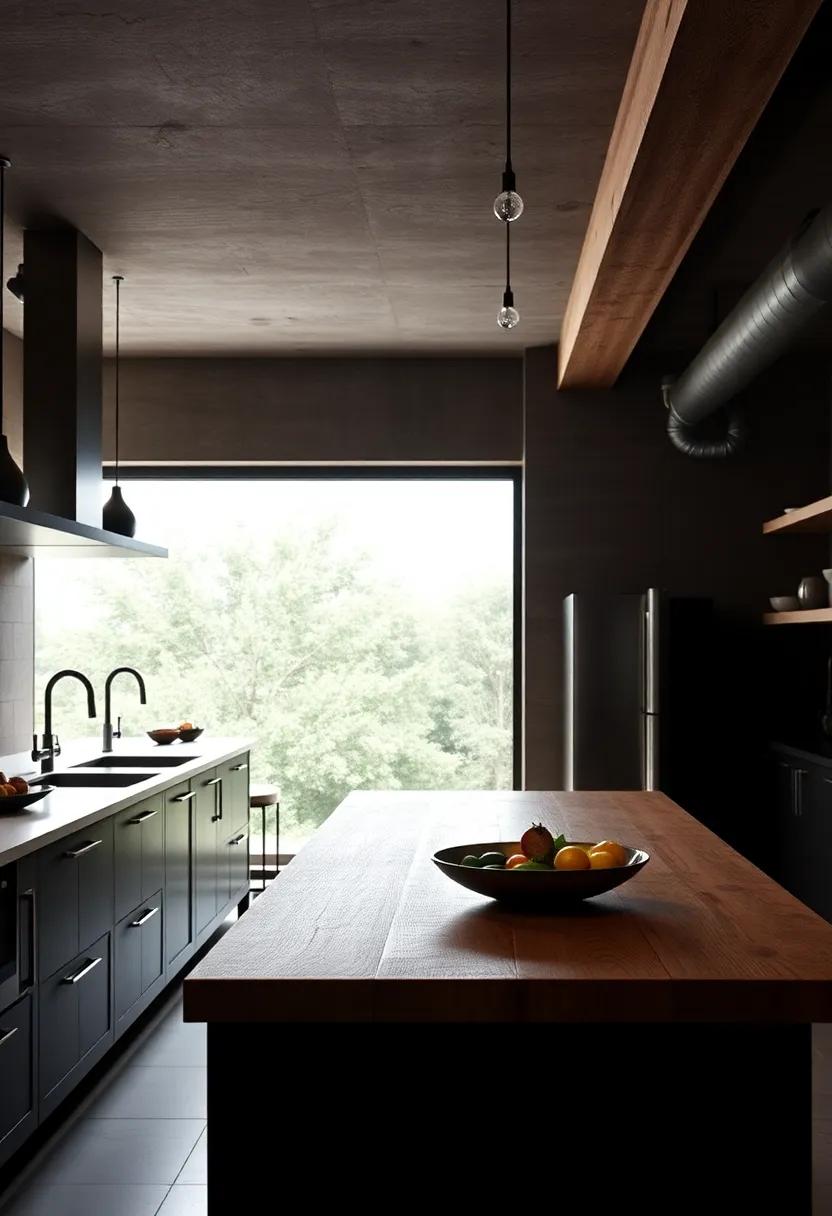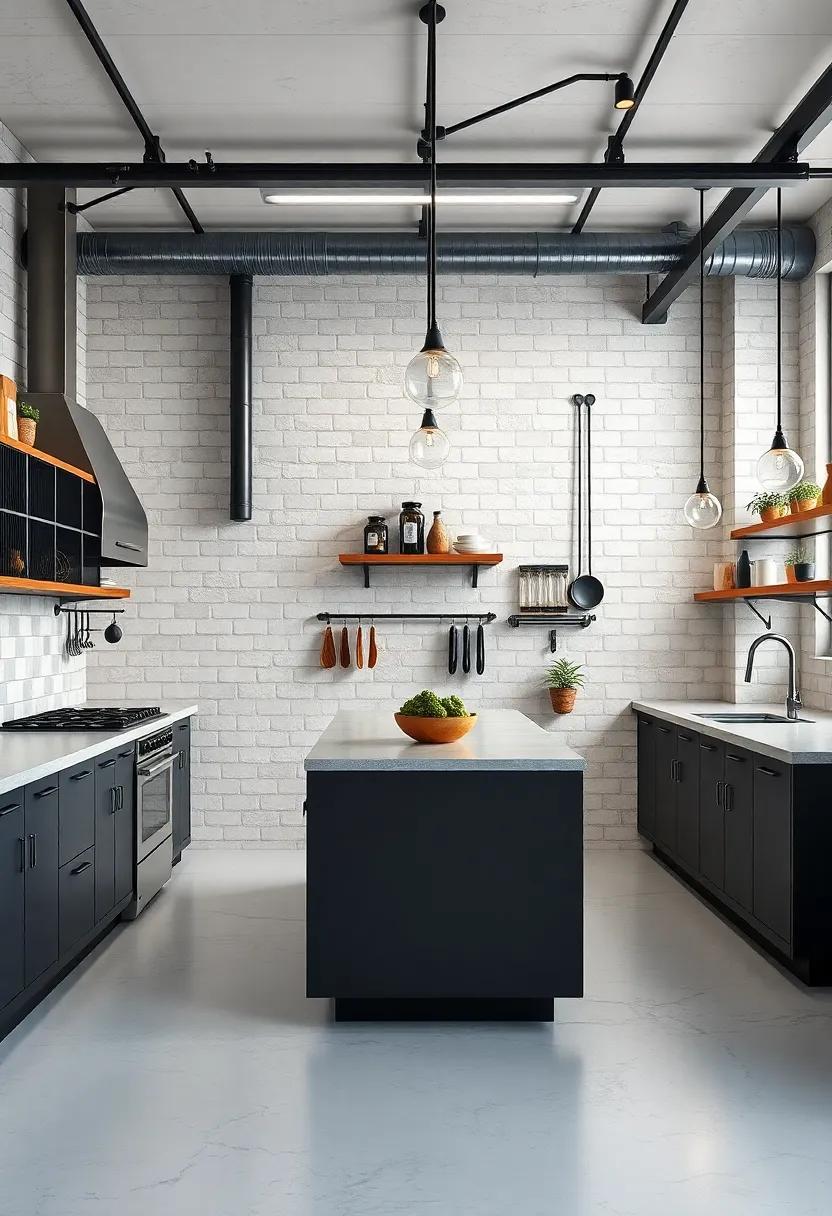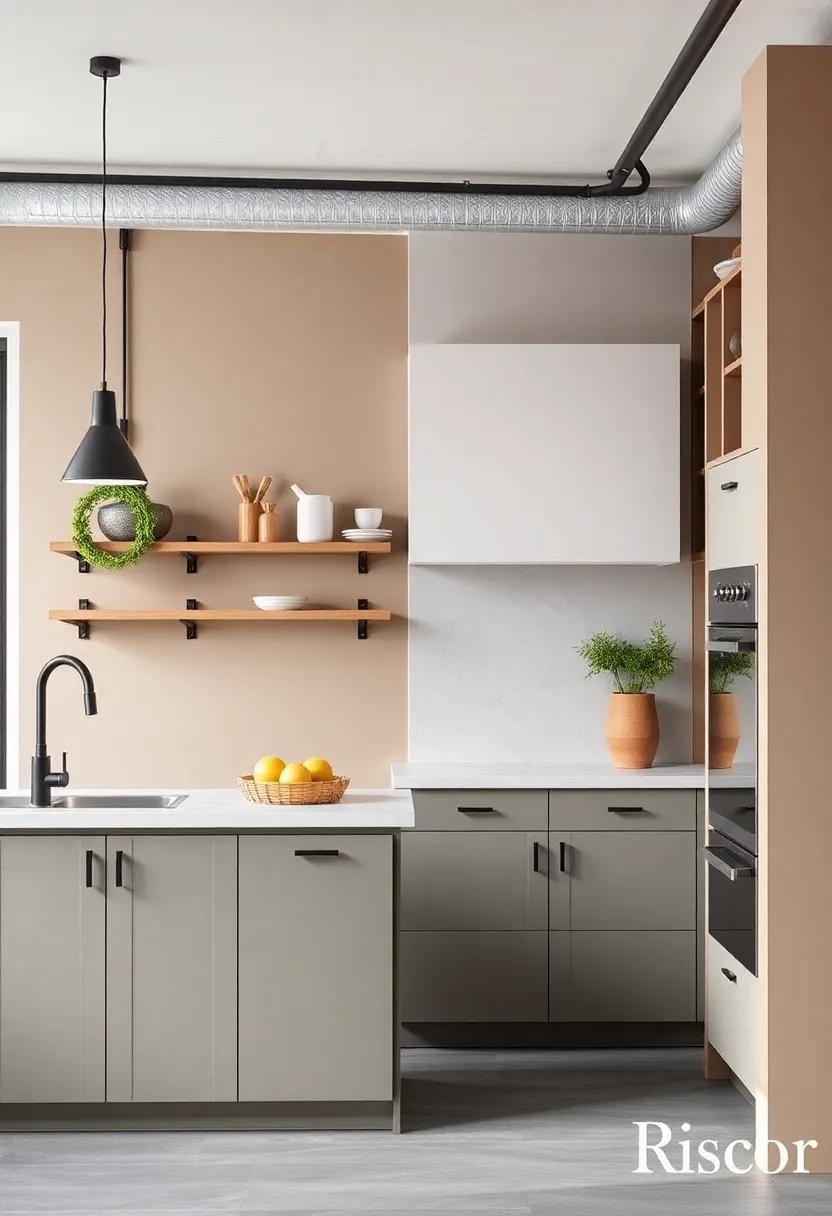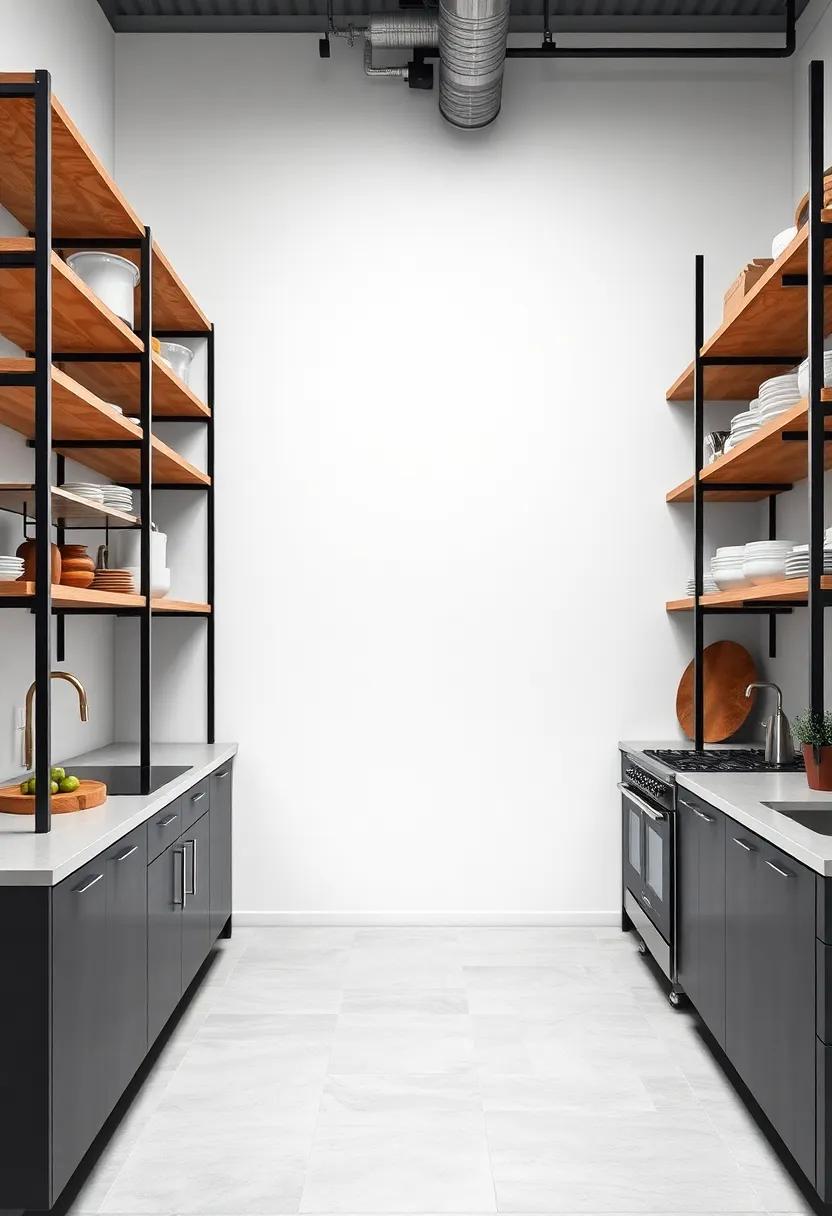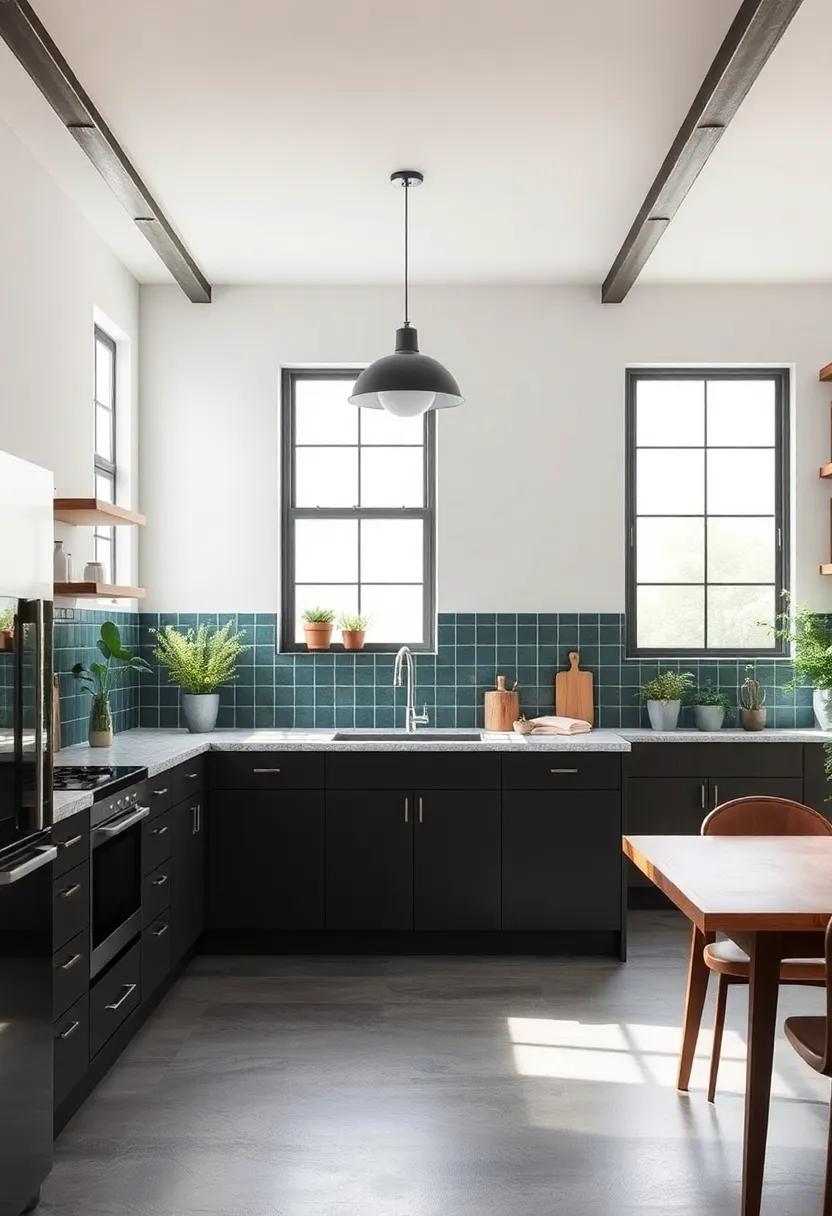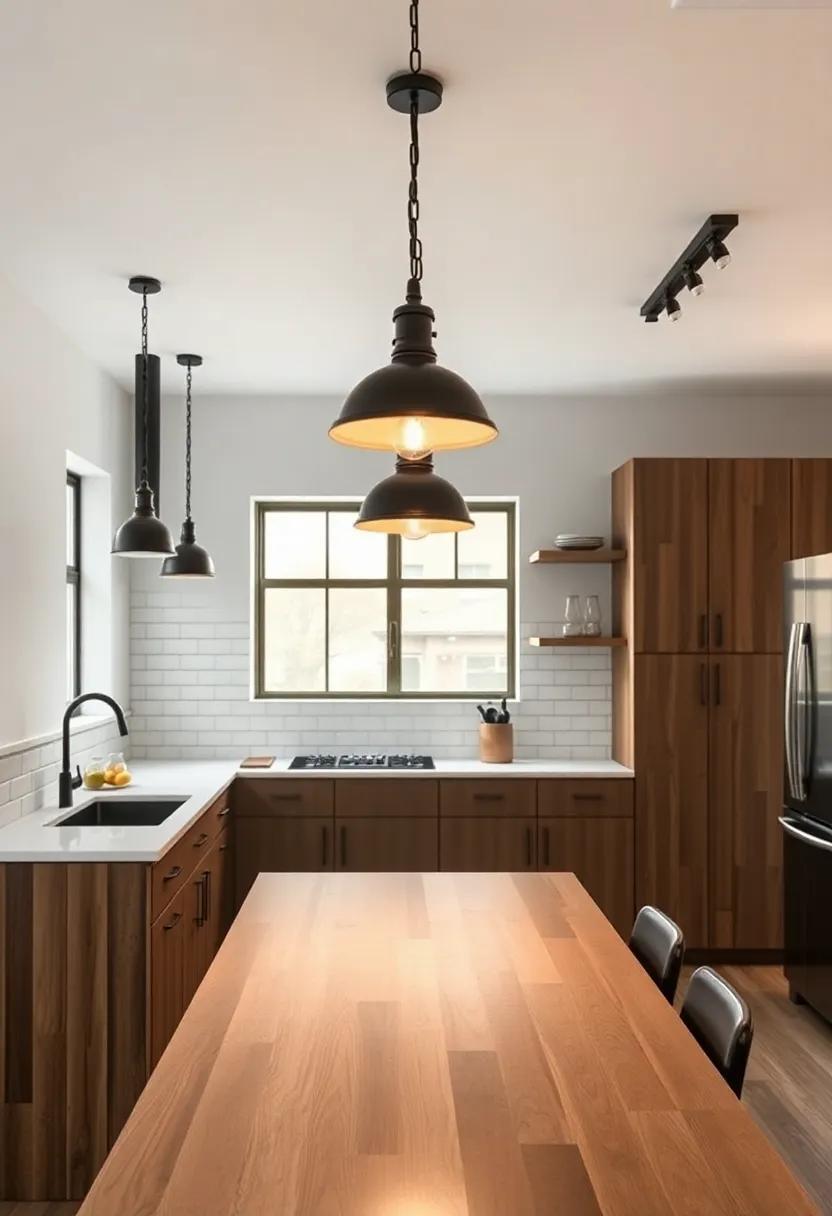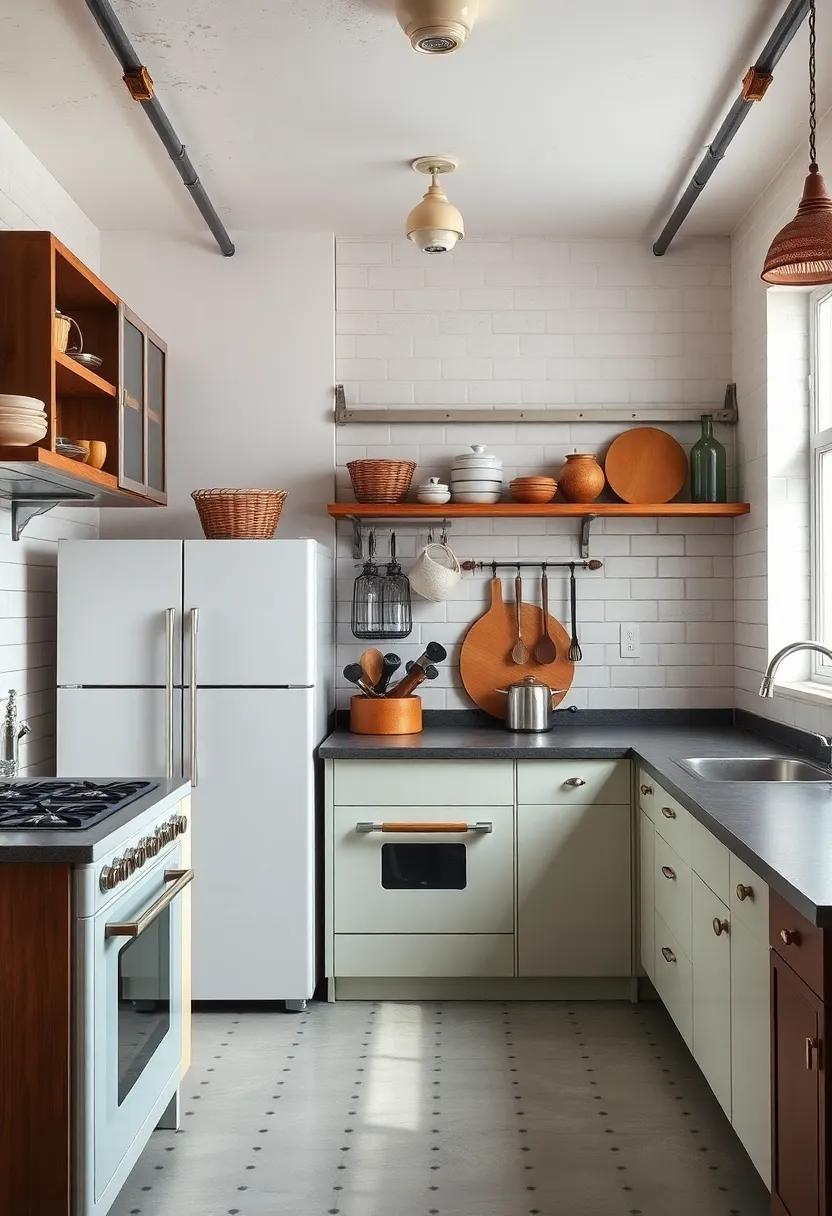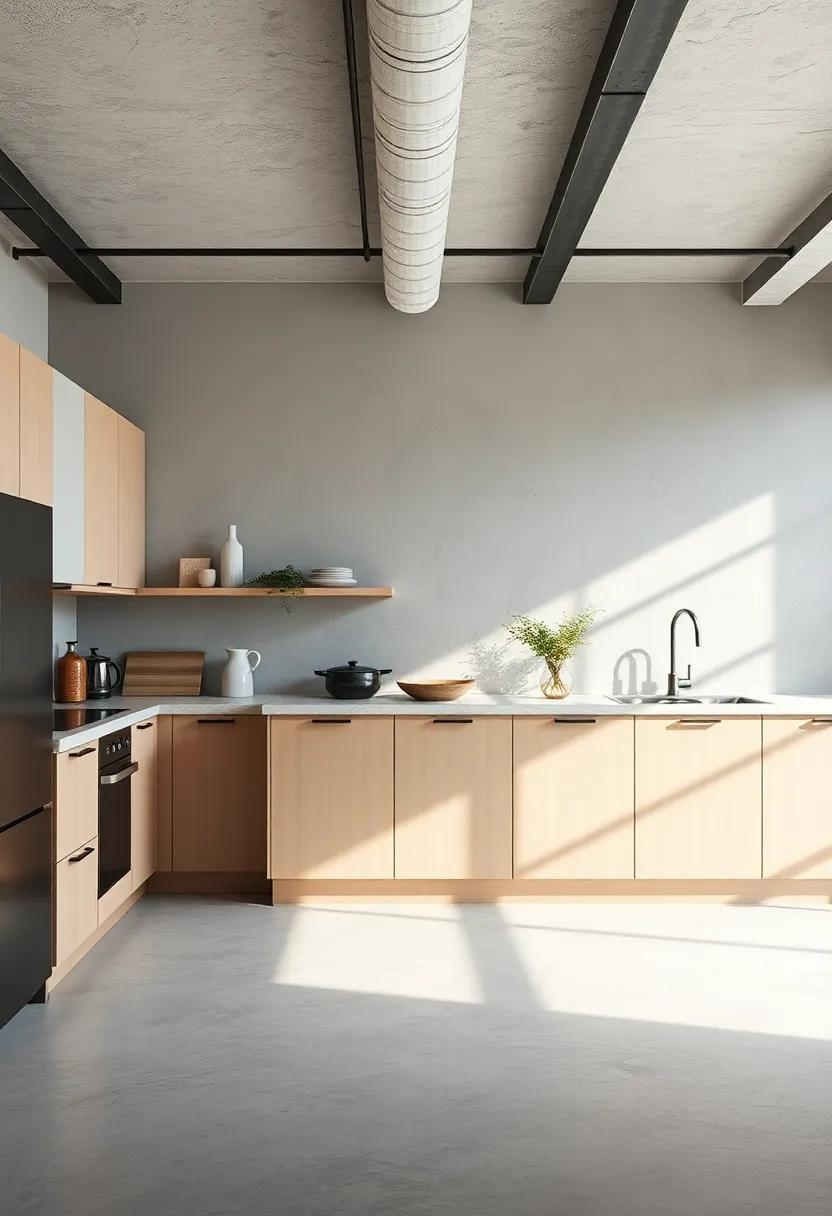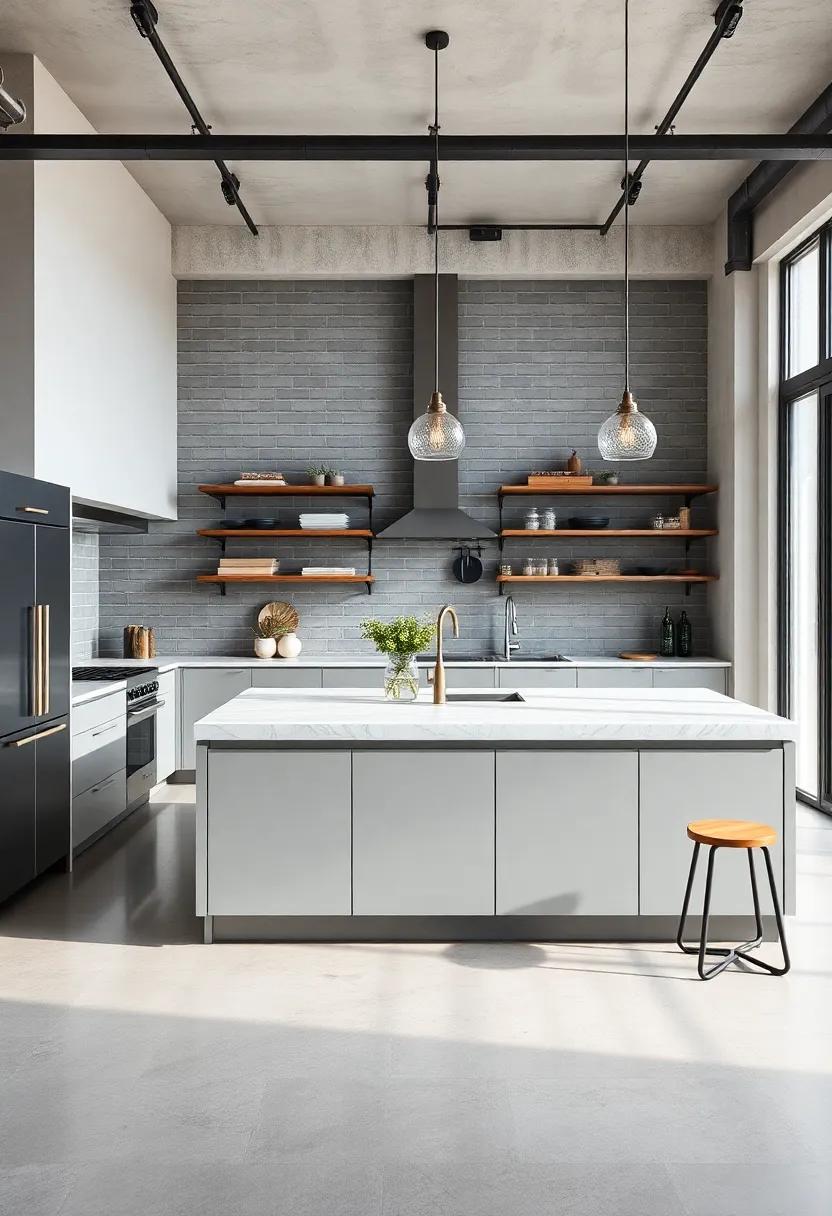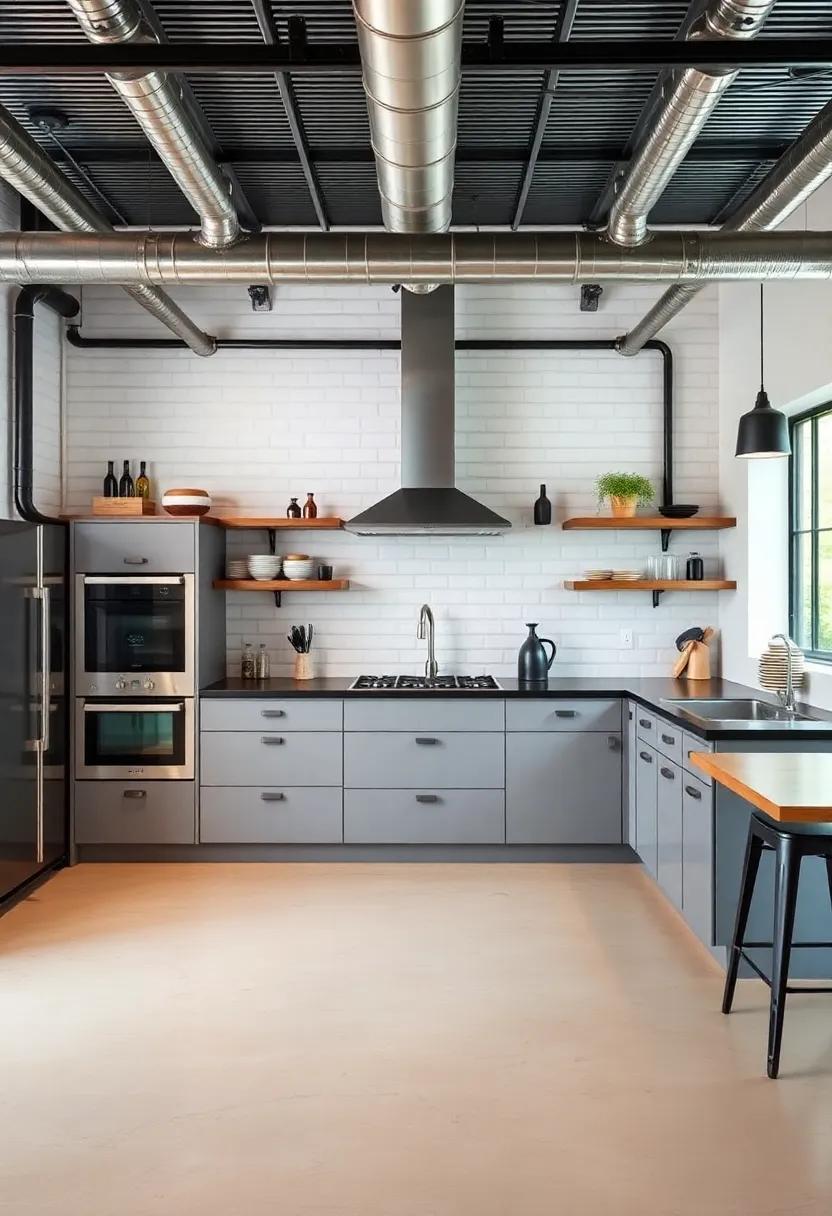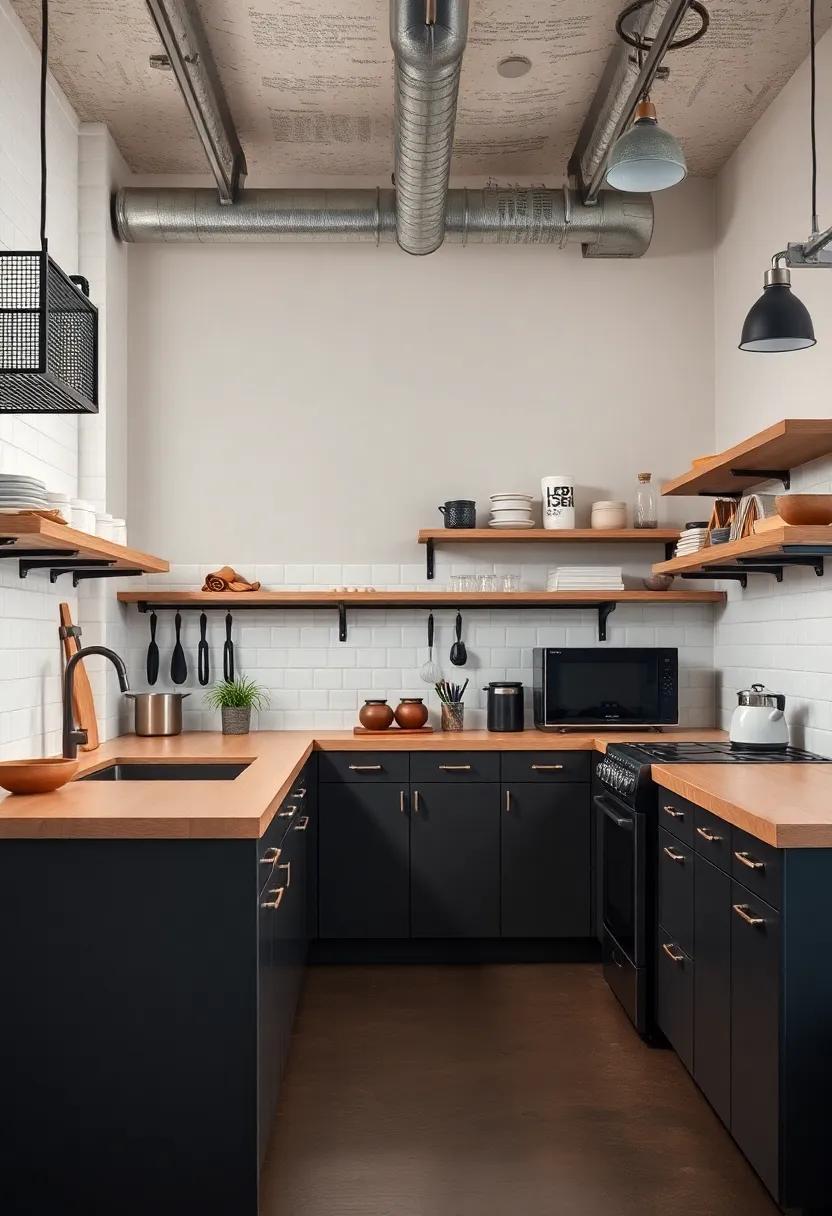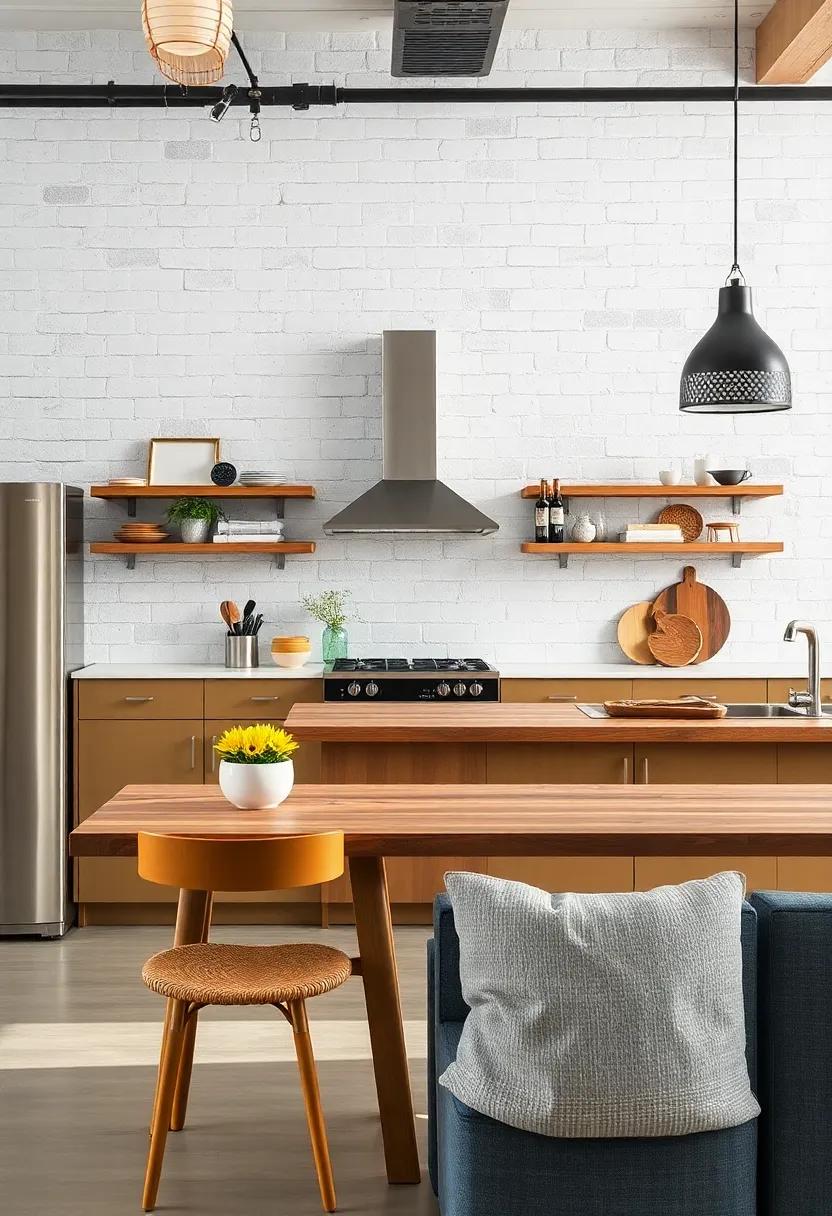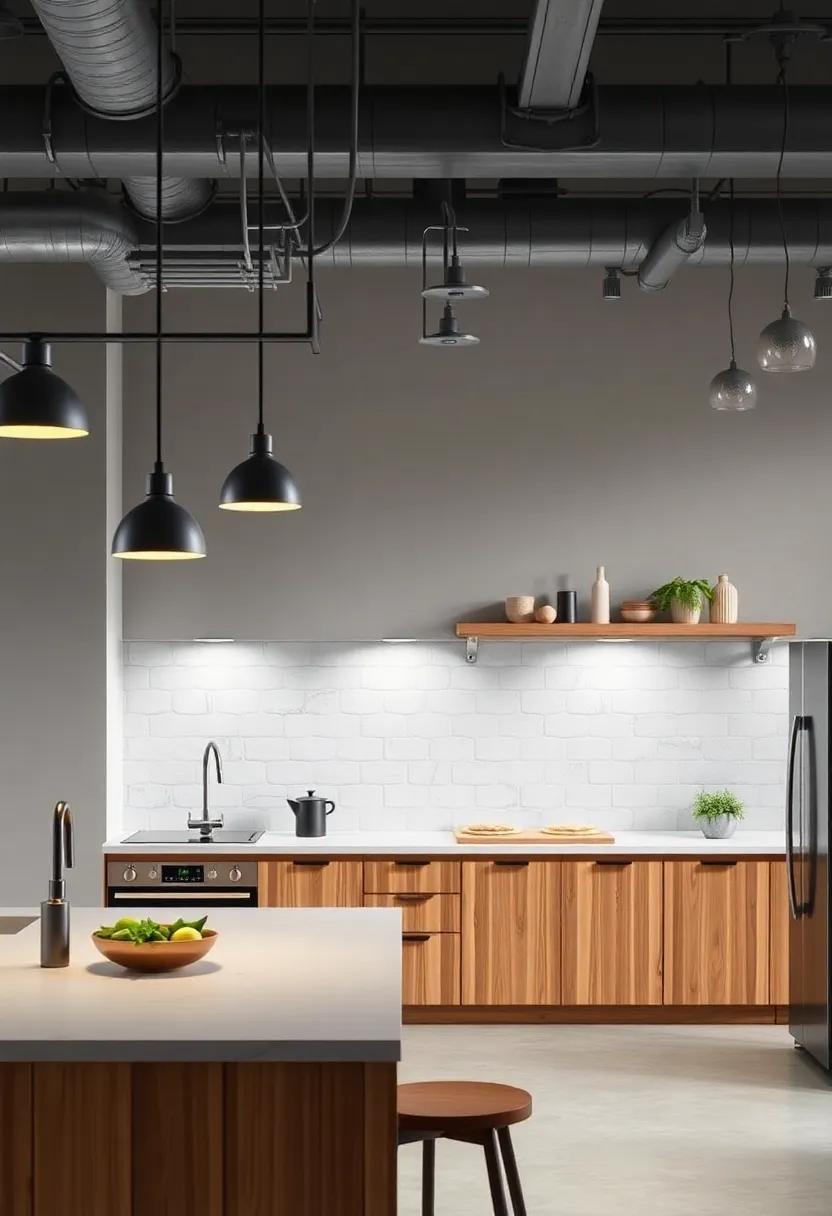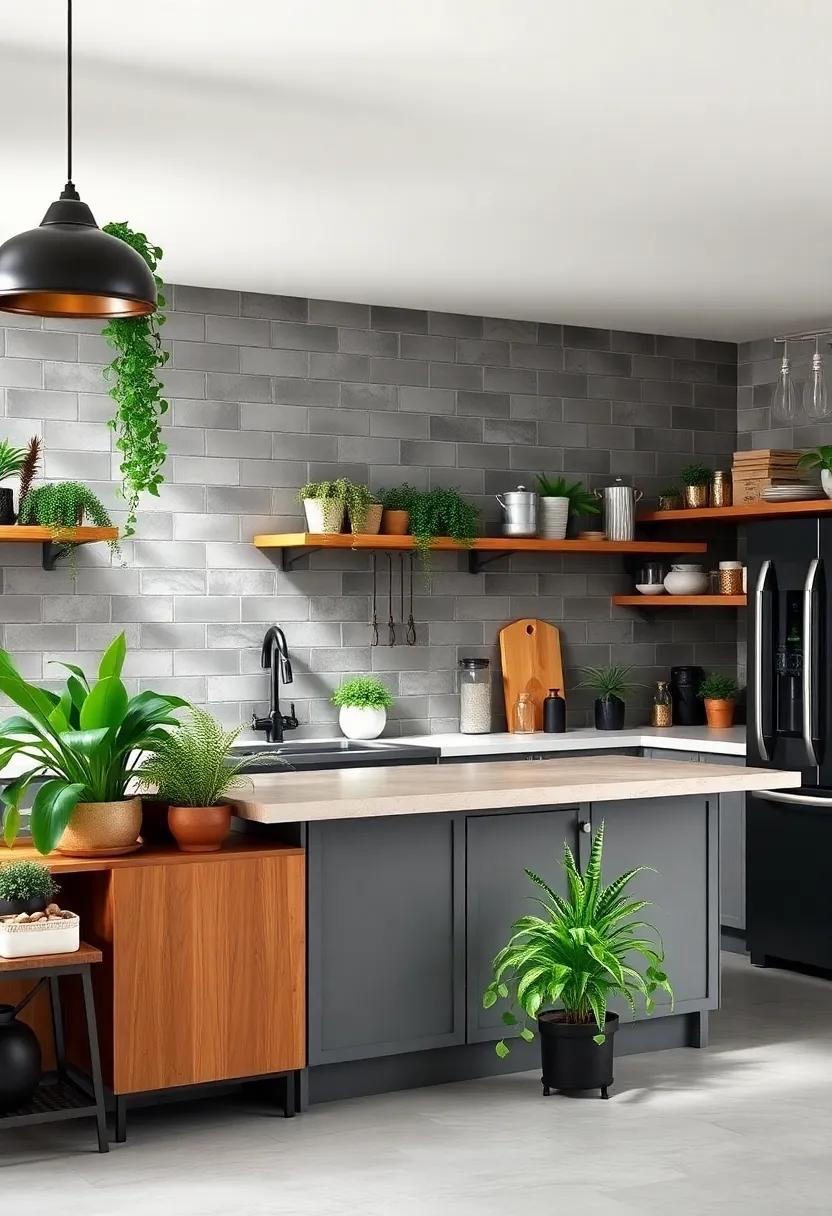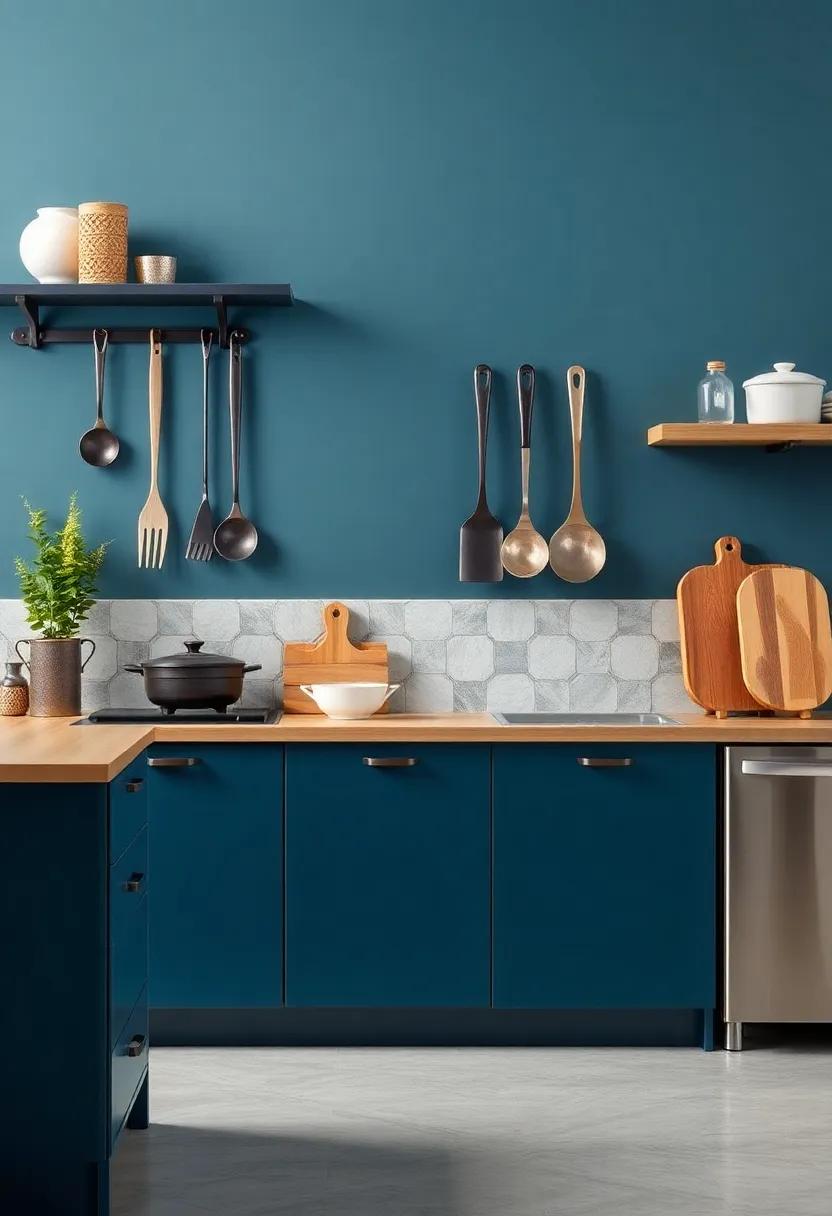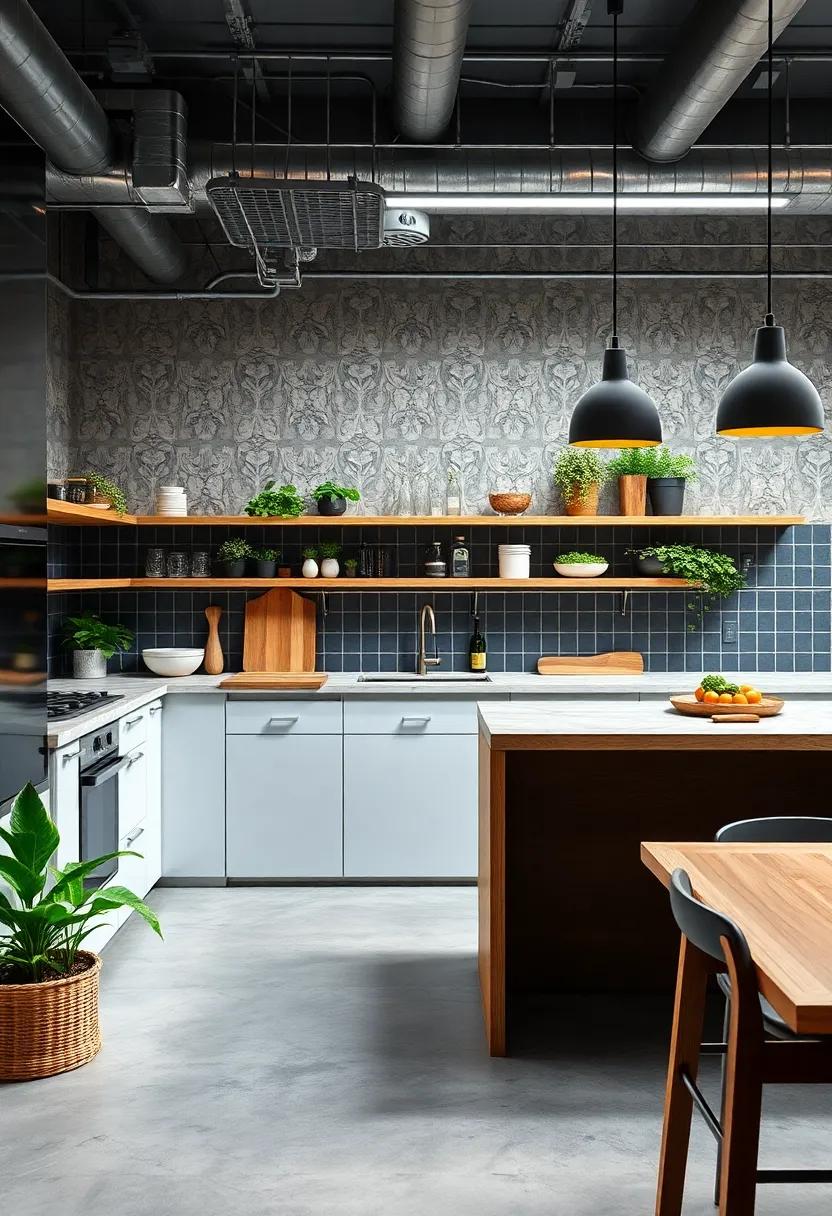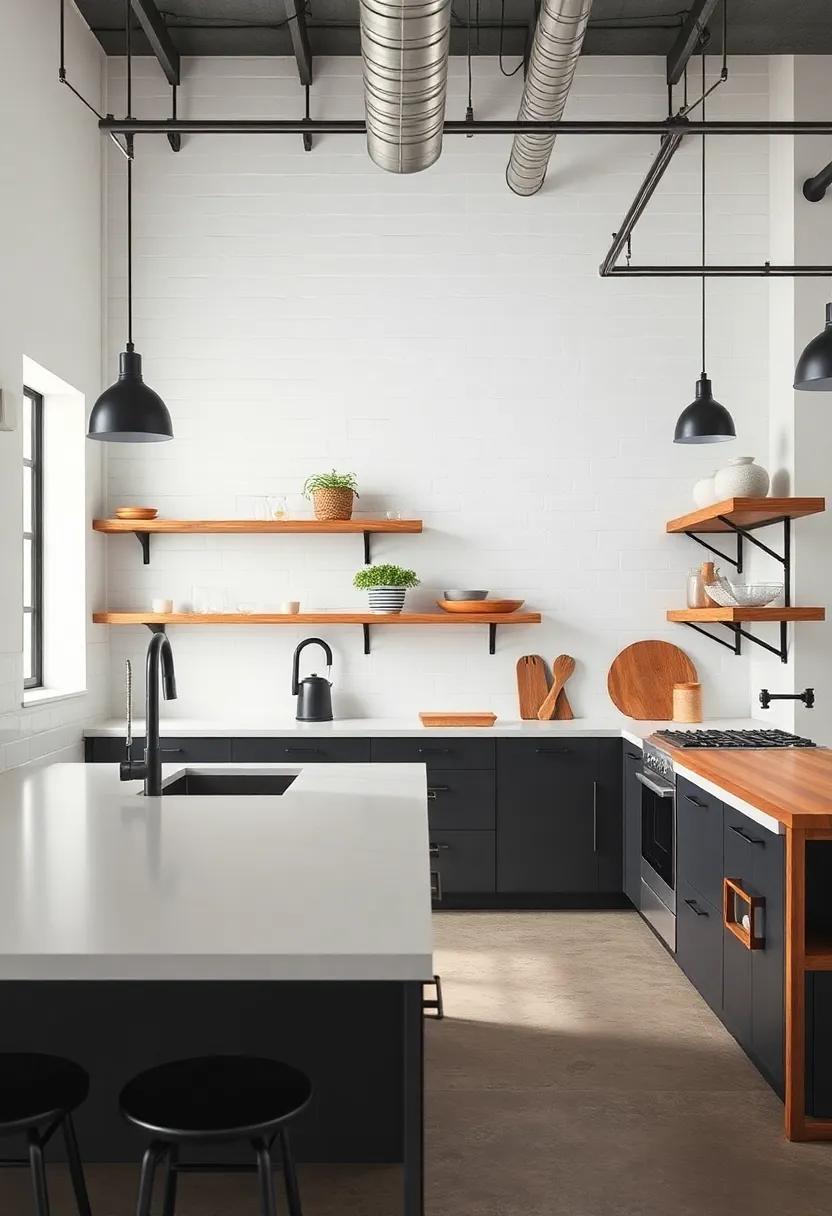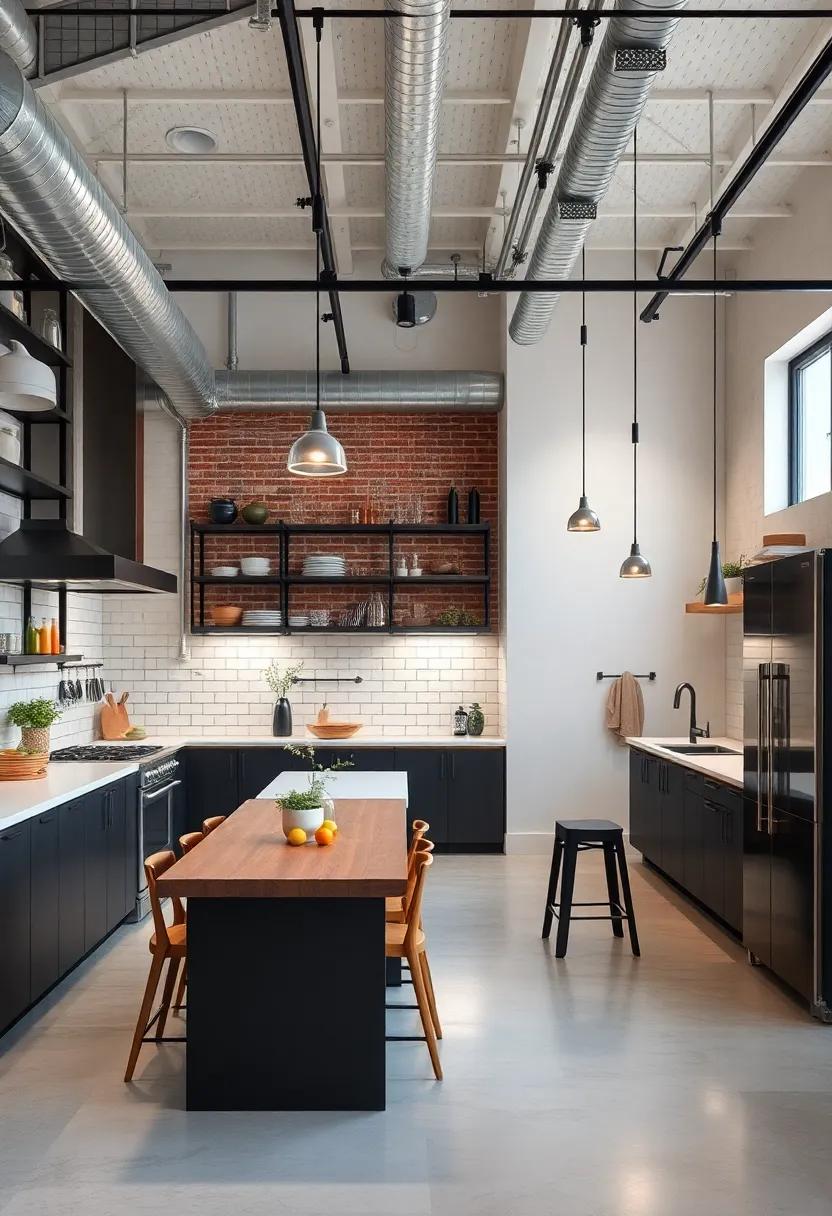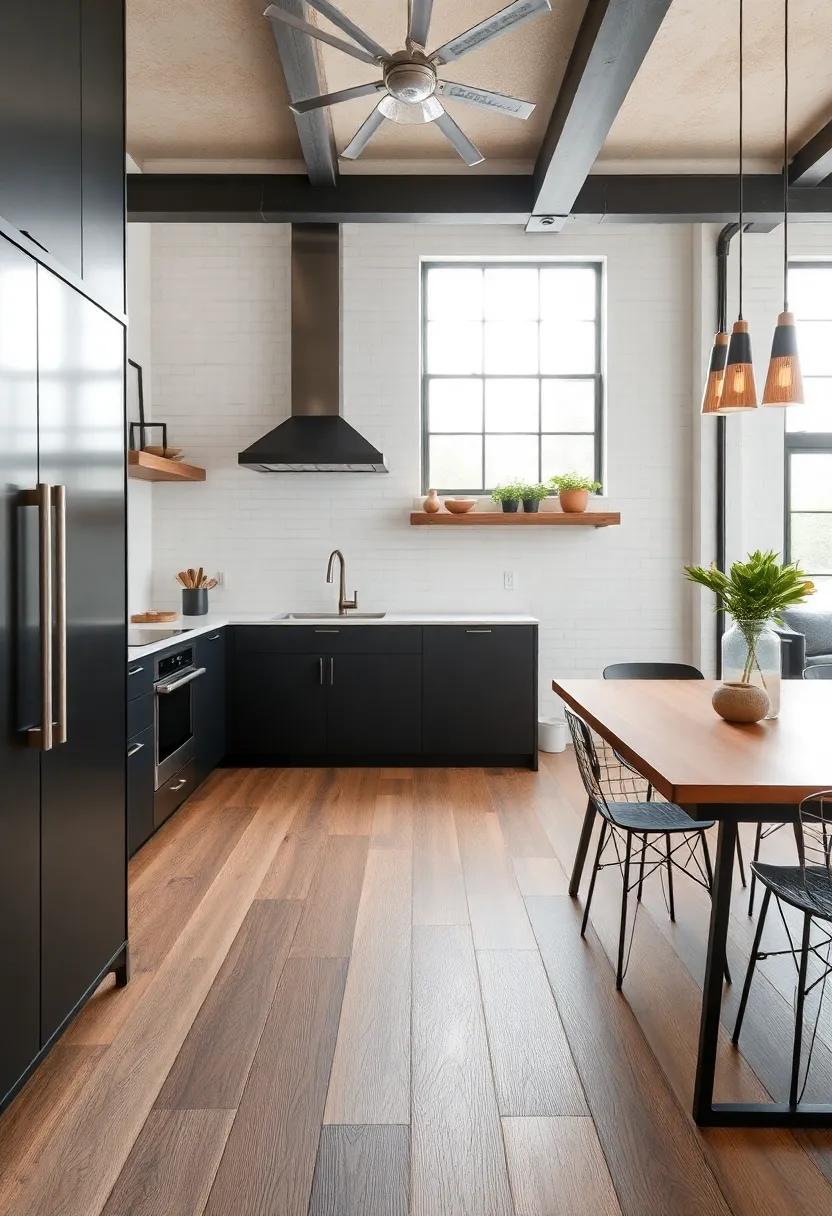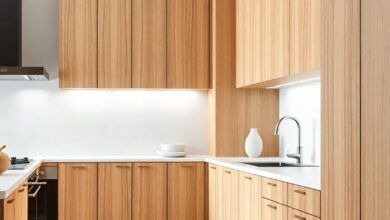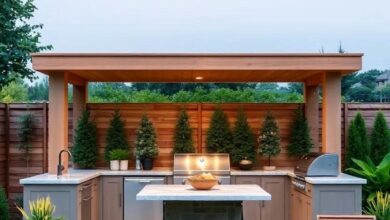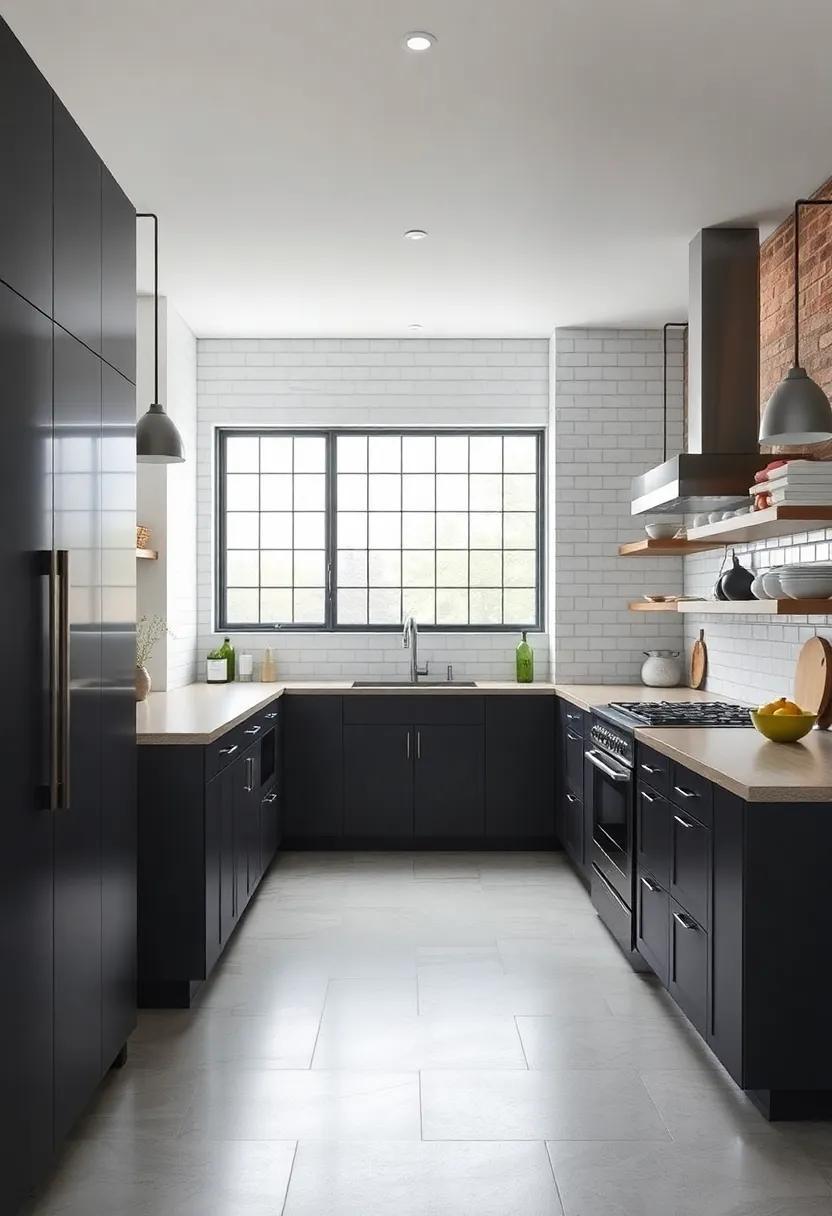
Exploring the Industrial Kitchen Style: A Blend of Functionality and Aesthetic Appeal
In the heart of every bustling restaurant and contemporary café lies an aesthetic that captivates both chefs and diners alike: the industrial kitchen style. Characterized by its raw, utilitarian charm, this design approach masterfully marries functionality with an unpretentious beauty that speaks to the very essence of culinary artistry. Exposed brick walls, stainless steel surfaces, and open shelving combine to create an surroundings where creativity flourishes and meals are crafted with precision. As we embark on a journey through the industrial kitchen style, we will explore how this trend transcends mere aesthetics, influencing not only the way we perceive culinary spaces but also how they operate. Join us as we delve into the elements that define this captivating design ethos, unearthing its origins, applications, and the unique appeal it holds in both professional and home settings.
Exploring Raw Materials: The Beauty of metal,Wood,and Concrete in Industrial Kitchen Design
The charm of the industrial kitchen style lies in its raw and unrefined materials, providing both a rugged beauty and unmatched durability. Metal, wood, and concrete come together to create an environment that not only prioritizes functionality but also resonates with authenticity.The use of stainless steel appliances and metal accents introduces a sleek, modern vibe while ensuring easy maintenance and longevity. Incorporating reclaimed wood adds warmth and character, creating a mesmerizing contrast against the cold, hard surfaces of industrial materials. This combination invites creativity, allowing innovative storage solutions, such as open shelving crafted from reclaimed wood and accent lighting that highlights the industrial aesthetic.
Concrete is a staple in this design style, often utilized for countertops, floors, and even statement walls.Its versatility allows for different finishes and textures, from polished to matte, catering to diverse preferences. When designing an industrial kitchen, consider the following elements:
- Metal Fixtures: Consider bronze or blackened steel for a bolder look.
- Wood Textures: Accent with natural finishes or painted surfaces to complement metals.
- Concrete Treatments: Employ integral color or stamping for enhanced visual appeal.
- Color Palettes: Opt for a mix of muted and bold tones to define different zones.
functional Layouts: crafting Efficient Spaces in an Industrial Kitchen Environment
In the heart of an industrial kitchen, efficient layouts are paramount for maximizing productivity while maintaining an aesthetic that reflects the raw beauty of the environment. The arrangement of workstations should encourage a seamless flow between cooking, plating, and serving. Key considerations when designing these spaces include:
- Work Triangle: Positioning the stove, sink, and refrigerator in a triangular layout minimizes movement and enhances efficiency.
- Zone Designation: Creating specific areas for planning, cooking, plating, and cleaning helps streamline operations and reduce cross-contamination.
- Storage Solutions: Utilizing vertical space with shelves and racks can keep essential tools and ingredients within easy reach, enhancing workflow.
Integrating durable materials such as stainless steel, concrete, and hardwood not only aligns with the industrial aesthetic but also withstands the rigors of daily use. Tables and surface areas should be strategically positioned to foster teamwork while providing ample workspace. Consider the following essential elements for crafting these efficient zones:
| Element | Description |
|---|---|
| Prep Stations | Dedicated areas for ingredient preparation, equipped with cutting boards and prep sinks. |
| Cooking Zones | Heated zones with stoves, grills, and ovens positioned for optimal access and safety. |
| Pass-Through | A serving area that connects the kitchen to the dining space, facilitating efficient service. |
The Color Palette: Embracing Neutrals and Bold Accents in Industrial Kitchen Styling
The allure of industrial kitchen styling lies in its ability to harmoniously blend raw materials with polished accents, creating a space that is both functional and aesthetically pleasing. The foundation of this design philosophy often rests upon a neutral color palette that includes shades of gray, taupe, and soft whites. These colors serve as a versatile backdrop, allowing architectural features like exposed beams and brick walls to shine. To inject personality and warmth into the mix, consider incorporating bold accent colors such as deep navy, forest green, or even vibrant mustard. These striking hues can be applied through accessories, like bar stools and cookware, enriching the visual texture while maintaining a cohesive overall look.
In addition to color, the combination of materials plays a vital role in the industrial kitchen aesthetic. When selecting your color palette,think about how different textures can interplay within your space. For example, metal cabinetry in matte black might contrast beautifully with a warm wooden countertop, while ceramic tiles in shades of slate can provide a grounding element that ties everything together. Below is a simple table outlining some potential color pairings and their applications:
| Color Pairing | Application |
|---|---|
| Gray & Navy | Cabinetry and appliances |
| White & Mustard | Dishware and accessories |
| Taupe & Forest Green | furniture and textiles |
Open Shelving: A Practical yet Aesthetic Feature for Industrial Kitchens
Open shelving has become increasingly popular in the realm of industrial kitchens, offering a perfect fusion of style and convenience. This design element allows for easy access to frequently used items while simultaneously transforming the kitchen into a visually striking space. With shelves constructed from materials like reclaimed wood and metal,the aesthetic complements the raw and edgy vibe typical of industrial interiors. The versatility of open shelving lets homeowners and professional chefs alike showcase culinary tools, vibrant dishware, and even unique decor, effectively breaking the monotony of enclosed cabinetry.
The practicality of open shelving extends beyond mere aesthetics. It promotes an organized environment where everything is readily visible and within reach, thus improving workflow and efficiency. To maximize the functionality of this feature, consider the following:
- Materials: Use sturdy and durable materials that can withstand the wear and tear of a busy kitchen.
- Height Placement: Install shelves at appropriate heights, ensuring that essential items are easily accessible.
- Styling: Combine functionality with personality by curating a mix of practical items and decorative pieces.
| Pros of Open Shelving | Cons of Open Shelving |
|---|---|
| Enhances visual appeal | Requires regular cleaning |
| Promotes easier access | May require organization maintenance |
| Showcases personality | Potential for dust accumulation |
Maximizing Natural Light: Windows and Open Spaces in Industrial Kitchen Decor
Incorporating large windows and open spaces is essential for fostering a shining and airy atmosphere in an industrial kitchen. These design elements not only enhance the overall aesthetic but also play a meaningful role in improving functionality. Natural light is paramount, as it allows chefs to work without relying solely on artificial illumination, creating a lively environment where creativity can thrive. The placement of windows should maximize sunlight exposure, whether they are floor-to-ceiling installations or long, narrow frames that provide a glimpse of the outside world. A thoughtfully designed layout can also enhance airflow, promoting a comfortable work environment even during the busiest hours.
To further accentuate the industrial theme, consider using materials that complement the raw beauty of your kitchen space.Choose window treatments that are minimalistic, such as sheer curtains or no-frills blinds, to ensure that light is not obstructed. Incorporating open shelving and spacious layouts encourages organization while keeping the area visually appealing. Here are some ways to combine these elements effectively:
- Use large skylights for added daylight during work hours.
- Incorporate reflective materials, like stainless steel, to amplify light levels.
- Designate zones for working, cooking, and socializing to maintain openness.
Statement Lighting: Unique Fixtures that Enhance the Industrial Kitchen Vibe
In an industrial kitchen, the right lighting can be a game changer, transforming the space from merely functional to a stylistic showcase. Statement fixtures, such as oversized metal pendant lights or vintage-inspired sconces, serve not just as practical sources of light, but as eye-catching elements that define the ambiance. characteristics of these unique pieces often include:
- Raw Materials: Elements like steel, brass, and glass reflect an industrial aesthetic.
- Bold Shapes: Geometry in design, such as geometric lines and sculptural forms, creates captivating visual interest.
- Vintage Appeal: Fixtures that mimic the styles of old factories or warehouses add authenticity to the theme.
Beyond their aesthetic contribution, these lighting solutions can enhance the functionality of the kitchen, illuminating work areas and creating a warm, inviting atmosphere. Consider integrating a mix of ambient, task, and accent lighting to layer the illumination effectively. A table showcasing popular statement lighting styles can definitely help visualize the possibilities:
| Fixture Type | Ideal Placement | Key Features |
|---|---|---|
| Pendant Lights | Above kitchen island | Adjustable height & multi-bulb options |
| Wall Sconces | against backsplash | Space-saving & stylish |
| track Lighting | General illumination | Directional light & versatility |
the Charm of Vintage Appliances: Blending Retro with Modern Functionality
In the heart of the industrial kitchen, vintage appliances evoke a sense of nostalgia while seamlessly enhancing modern functionality. These timeless pieces bring character and warmth,often transforming a utilitarian space into a culinary haven. Imagine the charm of a classic stand mixer in vibrant colors or a retro refrigerator with rounded edges, complementing sleek countertops and industrial shelving. The juxtaposition of these antique elements with today’s cutting-edge kitchen technology creates a captivating ambiance that captures the essence of both eras.
By incorporating retro appliances, homeowners can achieve a unique aesthetic that doesn’t sacrifice practicality. Some key features of these vintage designs include:
- Energy Efficiency: Many modern reproductions maintain the vintage look while offering improved energy consumption.
- Durability: Built to last, these appliances frequently enough come with sturdy construction that outperforms many contemporary options.
- Timeless Appeal: Their distinct styles inevitably become conversation starters, reflecting personal taste and an appreciation for design history.
To illustrate the impact of vintage appliances on modern kitchens, consider the following table highlighting popular choices:
| Appliance | Vintage Look | Modern Features |
|---|---|---|
| Stand Mixer | retro Colors | Multiple Speed settings |
| Refrigerator | Classic Rounded Design | Energy Star Rated |
| Toaster | Sleek Chrome Finish | Smart Heating Elements |
Textural Tension: mixing Smooth and Rough Elements in Industrial kitchen Design
In the realm of industrial kitchen design, the interplay between smooth and rough surfaces creates a compelling visual narrative. By incorporating concrete countertops and stainless steel appliances alongside reclaimed wood shelving and textured brick walls, homeowners can achieve a striking contrast that captivates the senses. The clean lines of polished surfaces can be softened by the organic patterns of rugged materials, crafting a space where functionality meets artistic expression. This juxtaposition not only elevates aesthetic appeal but also enhances practical usage, ensuring that every element serves a purpose while contributing to the overall design ethos.
When selecting materials to blend these contrasting textures, consider the following elements:
- Metal Finishes: Choose from brushed nickel or matte black for a sleek, contemporary look.
- Wood Types: Incorporate reclaimed or distressed wood for warmth and character.
- Hard Surfaces: Utilize polished concrete or quartz for countertops that withstand the rigors of kitchen use.
- Textile Elements: Add soft textiles,such as canvas or cotton,in seat cushions or aprons to balance hard surfaces.
To effectively visualize these combinations, consider the following comparison of textures:
| Texture Type | Visual impact | Functional Benefits |
|---|---|---|
| Smooth | Enhances light reflection and creates a clean look. | Easy to clean and maintain. |
| Rough | Adds warmth and character; evokes a rustic feel. | Offers grip and durability. |
creating a Focal Point: The Role of an Eye-Catching Island or Counter
In the realm of industrial kitchen design, the inclusion of an eye-catching island or counter serves as more than just a functional workspace; it embodies the soul of the space. These structures act as a visual anchor, drawing the eye and setting the tone for the entire kitchen. Much like a piece of art, a well-designed island can showcase materials such as reclaimed wood, stainless steel, or polished concrete, seamlessly blending utility with style. Integrating features like bold lighting fixtures or unique sink placements enhances the overall aesthetic,transforming a merely practical element into a conversation starter.
Beyond aesthetics, the focal point created by an island or counter optimizes kitchen workflow and enhances the cooking experience. With a thoughtfully designed layout, essential tools, and ingredients can be within arm’s reach, elevating efficiency. Consider the following features that contribute to both beauty and functionality:
- Clever storage solutions for quick access
- Integrated appliances for a sleek look
- Multi-level surfaces for versatile use
- Seating options to foster social interaction
When configured effectively, these elements not only uplift the kitchen’s visual appeal but also its overall performance, creating a harmonious blend of aesthetics and functionality that is quintessential to the industrial kitchen style.
Artwork and Decor: Incorporating Personal Touches in an Industrial Kitchen
in an industrial kitchen, where raw materials often take center stage, adding personal touches can create a harmonious blend of function and character. Consider incorporating elements that reflect your unique personality or culinary journey. Use bold, oversized artwork—perhaps a colorful abstract piece or a vintage-inspired poster of culinary herbs—to make a statement against exposed brick or metal walls. Complement these visuals with textured textiles, such as a cozy, patterned runner for your dining table or handmade pot holders that showcase artisan craftsmanship. This interplay of style elevates the atmosphere while still catering to the practical needs of a bustling kitchen.
Furthermore, decorative storage options can double as artful statements. Think open shelving that showcases your favorite cookbooks alongside handmade ceramic dishes or striking glassware. This not only keeps essentials within reach but also turns everyday items into intriguing displays. You can also incorporate natural elements, like potted herbs arranged on windowsills or wooden cutting boards used decoratively when not in action. To spice up your space, consider adding a gallery wall with:
| Artwork Type | Suggested Source |
| Framed recipes | Handwritten family recipes or vintage cookbook pages |
| Photography | Your own culinary creations or food photography |
| Posters | Local produce markets or favorite coffee brands |
These elements not only inspire creativity in your culinary space but also foster a sense of warmth and nostalgia, making the kitchen a true reflection of your style.
The Importance of Efficient Storage Solutions in Industrial Kitchen Spaces
In the heart of any industrial kitchen, the need for organized and efficient storage solutions plays a pivotal role in operational success. A meticulously structured storage system not only enhances workflow but also promotes safety and cleanliness.Optimizing space involves using vertical and modular storage units, such as:
- Wall-mounted shelving
- heavy-duty racks
- Storage carts on wheels
- Reusable containers for ingredients
Moreover, implementing an intuitive labeling system helps streamline the retrieval process, ensuring that chefs can quickly access what they need without disruptions. A well-planned layout combined with smart storage solutions fosters a more productive environment, allowing kitchens to handle peak service times with ease. The integration of aesthetics into storage choices can further enhance the kitchen’s visual appeal. Emphasizing materials and finishes that resonate with the industrial style—like stainless steel, wood accents, and sleek ceramics—can create a cohesive and inviting atmosphere.
Textiles and Soft Furnishings: Adding warmth to an Industrial Kitchen aesthetic
Incorporating textiles and soft furnishings into an industrial kitchen can create a striking contrast that softens the raw, rugged elements typically seen in this aesthetic. Opting for materials like canvas, linen, and cotton can introduce a tactile quality while enhancing comfort.Consider adding features such as:
- textured table runners that complement raw wooden or metal surfaces
- Plush cushions on seating areas to invite relaxation
- Soft window treatments to filter light and add warmth
Each of these choices serves not only a decorative purpose but also enhances the overall functionality of the space. When selecting colors and patterns, aim for muted tones or simple designs that harmonize with the industrial palette of grays, blacks, and earthy hues. For a curated approach, consider using a simple table to summarize some ideal colors and materials:
| Material | Color Palette |
|---|---|
| Linen | Soft Beige, Dusty Olive |
| Canvas | Charcoal Gray, Warm Cream |
| Cotton | Muted Rust, Deep Teal |
Ventilation and Comfort: Crafting a Breathable Space in Industrial Kitchen Design
In the bustling environment of an industrial kitchen,the importance of proper air circulation cannot be overstated. A well-ventilated space not only facilitates a comfortable working atmosphere but also plays a critical role in enhancing food safety. To achieve this, consider investing in high-efficiency exhaust hoods that effectively remove smoke, heat, and odors while integrating seamlessly into the kitchen’s aesthetic. Additionally, strategically placed fresh air intakes can provide a consistent flow of outdoor air, ensuring that staff remain energized and focused during long shifts. Here are some key features to consider:
- Powerful Exhaust Systems: capable of handling high volumes of air
- Make-up Air units: Replace air that is fatigued, maintaining pressure balance
- Window Adjustability: Encouraging natural ventilation on pleasant days
To create an even more comfortable work environment, consider the thermal comfort of the space. thoughtful placement of surfaces and materials can substantially influence how heat and humidity are managed.Using materials with low thermal mass,such as polished concrete or stainless steel,helps regulate temperature,while ceiling fans can aid air distribution. To illustrate the interplay between air quality and comfort, the following table highlights vital elements to focus on:
| Element | Benefit |
|---|---|
| Air Filtration Systems | Improvements in air quality and reduction of allergens |
| Humidity Control | Prevention of mold growth and enhancing comfort |
| Zone Heating/Cooling | Targeted climate control for different kitchen areas |
Greenery and Plants: Bringing life into the Ruggedness of Industrial Kitchens
In the world of industrial kitchens, where raw materials and functionality rule the design, the introduction of greenery and plants serves as an unexpected yet welcome contrast. plants not only enhance the aesthetic but also introduce a sense of calm and connection to nature amid the steel and concrete. Incorporating greenery can come in various forms, including:
- Hanging Planters: Perfect for utilizing vertical space, these can create a lush canopy overhead.
- Herb Gardens: Functional and fresh, these not only provide a pop of green but also offer fresh ingredients ready for culinary use.
- Large Potted Plants: Strategically placed tall plants can soften the edges of a rugged kitchen, breaking up hard lines.
Moreover,the choice of plants plays a crucial role in enhancing the overall atmosphere. Certain plants are notably suited for kitchen environments due to their low maintenance and air-purifying qualities. A simple table showcasing these selections can be quite insightful:
| Plant Type | Benefits |
|---|---|
| Snake Plant | Low light tolerant, purifies air |
| Pothos | Removes toxins, easy to grow |
| Herbs (Basil, Mint) | Fresh culinary use, fragrant |
Accessorizing with Purpose: Finding the Right utensils and Decor for Industrial Style
When it comes to embracing the raw elegance of industrial style in your kitchen, choosing the right utensils and decor is essential.Consider the use of metal and wood materials that not only serve a functional purpose but also enhance the rugged charm of your space. Mixing textures like matte finishes with polished surfaces can create visual interest. Some ideal utensils to complement this aesthetic include:
- Cast iron cookware – Durable and excellent for cooking, they add a vintage vibe.
- Wooden cutting boards – A natural contrast that softens hard lines.
- Stainless steel utensils – Their sleek, modern appearance echoes industrial elements.
- Wire baskets – Perfect for storage while showcasing your ingredients.
In addition to utensils,decor should also resonate with the overall theme. opt for pieces that reflect the stark, yet lovely characteristics of urban life. Incorporate items such as:
- Exposed light fixtures – Edison bulbs can provide a warm glow with a retro feel.
- Metal shelves – Utilize vertical space while showcasing beautiful dishes or plants.
- Reclaimed wood accents – Tables or shelving made from recycled materials can add character.
To streamline your choices, consider these suggestions:
| Item | Functionality | Aesthetic Value |
|---|---|---|
| Cast Iron Skillet | Versatile cooking | Rustic charm |
| Wooden Serving Board | beautiful serving | Natural warmth |
| Wire Baskets | Storage | Industrial edge |
| Metal Wall Art | Decorative | Edgy decor |
Sustainable Choices: Eco-Friendly Elements in Industrial Kitchen Design
Incorporating eco-friendly elements into an industrial kitchen design not only elevates its aesthetic appeal but also enhances functionality while promoting sustainability. By choosing recycled materials for countertops and cabinetry, such as reclaimed wood or recycled metal, the kitchen can maintain its rugged charm while reducing its carbon footprint. Additionally, the selection of energy-efficient appliances, which consume less power and water, makes a significant impact on both utility bills and the environment. Consider the following eco-conscious upgrades:
- LED lighting: Consumes up to 80% less energy than traditional bulbs.
- Sustainable Flooring: Options like bamboo or cork offer durability and eco-friendliness.
- Low-VOC Paints: Ensure healthier indoor air quality while minimizing toxic emissions.
- Upcycled Furniture: Adds character and reduces waste.
Pairing these choices with smart design elements can create a kitchen that is not only stylish but also inviting. Strategic use of natural light through large windows or skylights reduces the need for artificial lighting during the day, further emphasizing sustainability. Implementing a kitchen layout that allows for easy recycling and composting can also encourage eco-friendly practices. Below is a simple table highlighting some of the most effective sustainable materials that can be used in the design:
| Material | Benefits |
|---|---|
| Reclaimed Wood | Adds warmth and character; reduces deforestation. |
| Bamboo | Fast-growing resource; strong and durable. |
| Recycled Steel | Highly durable; reduces mining impact. |
| Quartz countertops | Non-porous; made from recycled materials. |
Contrasting Styles: Blending Industrial with Modern or Rustic Elements
When merging industrial elements with modern or rustic designs, the goal is to create a harmonious space that retains the raw, edgy charm of industrial style while incorporating warmth and sophistication. Exposed brick walls, metal fixtures, and concrete surfaces can beautifully contrast with the soft textures and organic shapes found in modern decor, such as sleek cabinetry or minimalistic countertops. This fusion allows for a kitchen that is both functional and inviting, showcasing unique combinations like matte black finishes paired with rich, wooden accents. The interplay between a rugged aesthetic and refined details encourages a dynamic atmosphere,drawing attention to both the craftsmanship and the materials used.
Incorporating rustic elements not only adds character but also provides a sense of comfort that can soften the harsher aspects of industrial design.Wooden beams, farmhouse-style tables, and handcrafted accessories create an inviting environment that complements the rawness of an industrial kitchen. To visualize this synergy, consider building a focal point with a rustic dining table surrounded by industrial metal chairs, or a well-lit kitchen island combining reclaimed wood with polished steel. The result is a versatile space that nurtures both tradition and innovation, making cooking and gathering a memorable experience.
Creating Zones: Defining Cooking, Dining, and Social Spaces in Industrial Kitchens
in an industrial kitchen, the art of creating distinct zones is essential for achieving both efficiency and a lively atmosphere. By defining specific areas for cooking, dining, and social interaction, chefs and guests alike can enjoy the space to its fullest. Consider the following strategies for optimizing these zones:
- Cooking Zone: equipped with professional-grade equipment, this area should prioritize workflow, featuring easily accessible tools and ingredients.
- Dining Zone: A blend of rustic and modern furnishings can create a welcoming environment, inviting diners to savor their meals comfortably.
- Social Zone: Incorporate communal tables or comfortable seating arrangements designed for social gatherings, enhancing community interaction.
To visualize the functional layout, a simple table can help identify the components of each zone with a clear distinction of purpose:
| Zone | Purpose | Key Features |
|---|---|---|
| Cooking | Food Preparation & Cooking | Stainless steel surfaces, ample storage, open layout |
| Dining | Meal Enjoyment | Custom tables, comfortable seating, ambient lighting |
| Social | Interactions & Gatherings | Cozy seating, warm decor, interactive spaces |
The Impact of Flooring: Highlighting Durable and Stylish Options for an Industrial Look
Choosing the right flooring is crucial in achieving an industrial kitchen look that is both durable and aesthetically pleasing. Materials such as concrete, polished wood, and ceramic tiles not only withstand heavy foot traffic but also blend seamlessly with the raw, utilitarian vibe of industrial design.These options can be further enhanced with finishes that emphasize texture, allowing for visual interest without sacrificing practicality. Some popular flooring choices include:
- Concrete: Known for its resilience and modern appearance, it can be sealed or stained for added character.
- Kitchens with reclaimed wood: Offers warmth and a rustic touch while being sturdy enough for a busy environment.
- Ceramic tiles: Available in various patterns and colors, they provide design flexibility along with exceptional durability.
It’s essential to consider the color palette when selecting flooring to complement the metal fixtures and exposed elements typical of industrial kitchens.Darker tones can create a dramatic effect, while lighter shades can enhance natural light, making the space feel more open. The table below highlights some options for flooring materials, focusing on their features and benefits:
| Material | Durability | Maintenance | Style |
|---|---|---|---|
| Concrete | High | Low | Modern & Sleek |
| Reclaimed Wood | Medium | Moderate | Rustic Charm |
| Ceramic Tiles | High | Low | Diverse Patterns |
Evaluating Finishes: The Role of Patinas and Textured Surfaces in Industrial Design
the choice of finishes in industrial design is not merely a matter of aesthetics; it significantly influences both the visual appeal and practical functionality of kitchen spaces. Patinas, with their rich, weathered appearance, offer a unique way to enhance the character of materials, lending a sense of history and authenticity to modern kitchens. Textured surfaces serve a dual purpose, providing both visual depth and tactile interest. In an industrial kitchen, these finishes can create an inviting atmosphere while also providing functional benefits, such as improved grip on handles or reduced visibility of fingerprints and smudges. Designers frequently enough select finishes that can withstand the rigors of a busy kitchen environment, ensuring that beauty and practicality coexist harmoniously.
Consider the variety of finishes that can elevate the design of an industrial kitchen:
- Brushed Stainless Steel: Resilient and modern, perfect for countertops and appliances.
- Oxidized Copper: Offers an appealing patina that evolves over time,adding character.
- Textured Concrete: Durable and visually striking, ideal for floors and countertops.
- Powder-Coated Metals: Available in various colors, enhancing design while maintaining durability.
To visualize the impact of these finishes, the following table highlights both the aesthetic qualities and functionality features of selected materials:
| Finish Type | Aesthetic Appeal | Functional Benefits |
|---|---|---|
| Brushed Stainless Steel | Modern, sleek | Resistant to corrosion, easy to clean |
| Oxidized Copper | Warm, vintage | Antimicrobial properties, unique aging |
| Textured Concrete | Rugged, industrial | high durability, resistance to staining |
| Powder-Coated Metals | Vibrant, customizable | Scratch-resistant, long-lasting finish |
Insights and Conclusions
As we draw the curtain on our exploration of the industrial kitchen style, it becomes clear that this design approach is more than a mere aesthetic statement—it is indeed a harmonious blend of functionality and visual intrigue.The raw textures,open layouts,and utilitarian elements not only invite creativity but also echo a commitment to practicality,making these kitchens as effective for gourmet cooking as they are inspiring for everyday meal preparation.
Incorporating elements such as exposed brick, metal fixtures, and reclaimed wood can transform your culinary space into an urban sanctuary, where form meets function in the most delightful ways. As you venture into creating or redesigning your own kitchen, consider how the industrial style’s ethos can enhance not just the physical space, but also the cooking experience itself.
So,whether you’re a culinary novice or a seasoned chef,embracing the industrial kitchen style can elevate both your kitchen’s ambiance and your cooking journey. In every meal prepared amidst its rugged beauty, you’ll find a little piece of artistry woven with the practicality that this unique design has to offer. Your kitchen is not just a place to cook; it’s a canvas waiting to reflect your personality, take risks, and celebrate the joy of food in an environment that inspires. Happy cooking!
As an Amazon Associate I earn from qualifying purchases.
